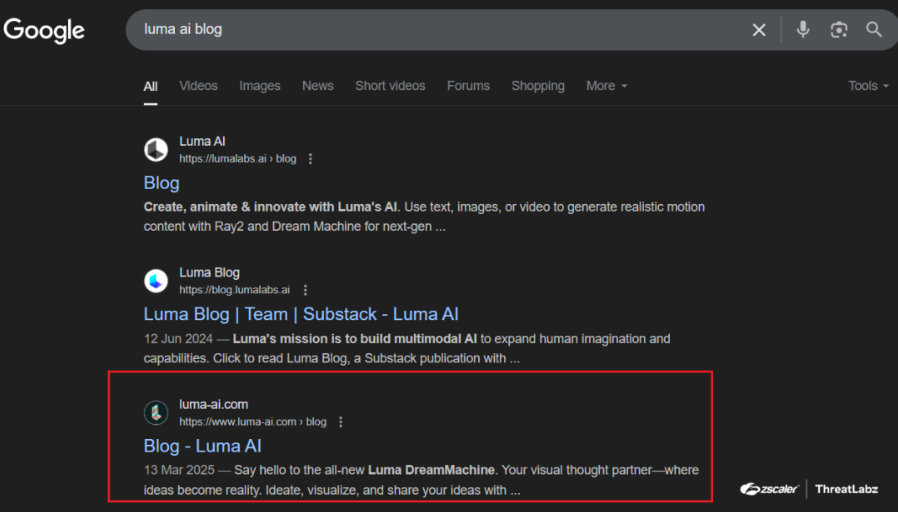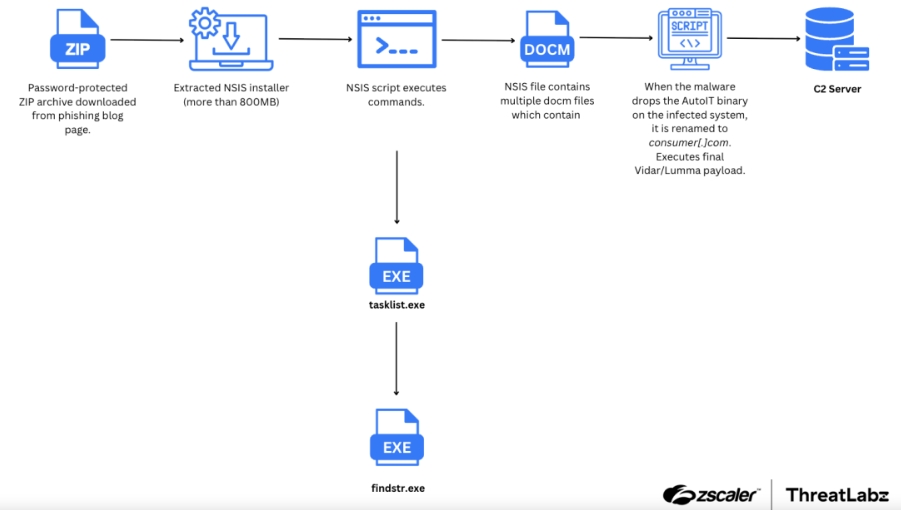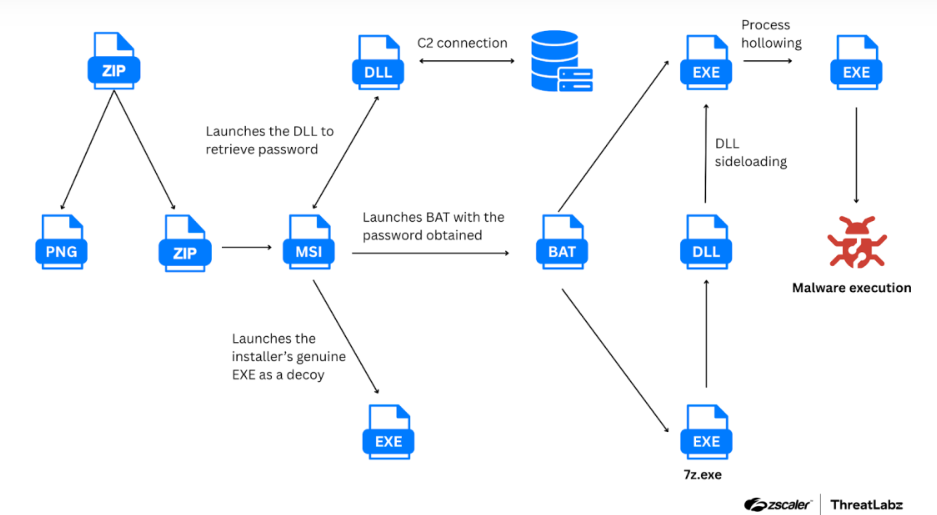
Cybercriminals Exploit Search Results to Deliver Malware to Small Business Networks
The Hidden Danger in Search Results: Protecting Your Houston Business from SEO Attacks – How Malicious Actors Exploit SMB Technology Adoption
Cybercriminals Exploit Search Results to Deliver Malware to Small Business Networks
Malicious actors have weaponized search engine algorithms to create one of the most insidious cyber threats facing modern businesses. This attack methodology manipulates how search results appear to users, placing dangerous websites at the top of seemingly innocent searches for business software and tools. Recent intelligence indicates that thousands of organizations have fallen victim to these deceptive campaigns, with attackers specifically focusing on the daily technology needs of small and medium enterprises.
Understanding SEO Poisoning
Search engine manipulation attacks represent a fundamental breach of trust between users and the digital tools they rely on daily. Cybercriminals exploit the inherent confidence people place in search rankings by artificially elevating malicious websites to prominent positions.These fraudulent sites are meticulously designed to replicate legitimate software vendors, business platforms, and trusted service providers with remarkable accuracy.
The effectiveness of these attacks stems from deeply ingrained user behavior patterns. When faced with search results, most individuals instinctively select options from the first page, particularly those appearing in top positions. This psychological tendency creates an ideal environment for cybercriminals to intercept users seeking legitimate business tools and redirect them toward malicious alternatives.
 The Scale of Current Attack Campaigns
The Scale of Current Attack Campaigns
Recent cyber intelligence reveals that search engine manipulation has evolved into a highly coordinated threat affecting thousands of businesses across multiple industries. Threat actors have transformed these deceptive strategies into precision weapons that specifically target the software and tools organizations depend on for core business functions, achieving success rates that far exceed traditional attack methods.
- Widespread Business Impact: Security researchers documented over eight thousand five hundred small and medium business compromises during a four-month period in early 2025, representing a significant portion of the SMB sector
- Strategic Application Focus: Malicious code was embedded within fake versions of essential workplace applications, with video conferencing tools representing the largest attack vector at forty-one percent, followed by email and presentation software
- Artificial Intelligence Tool Exploitation: Cybercriminals dramatically increased their focus on emerging technology, with fake AI applications experiencing a one hundred fifteen percent surge as businesses rush to adopt machine learning solutions
- Multi-Stage Attack Progression: These initial compromises frequently serve as launching points for more severe security incidents, including data encryption attacks, credential harvesting, and complete infrastructure takeovers
- Continuous Threat Evolution: Criminal organizations actively monitor technology adoption trends and business software preferences to refine their targeting strategies and maximize infection rates
The coordination and scale of these operations demonstrate why conventional security measures prove inadequate against modern search engine manipulation campaigns.
 Criminal Attack Methodologies
Criminal Attack Methodologies
Contemporary search manipulation campaigns utilize sophisticated technical approaches that exploit both algorithmic vulnerabilities and human decision-making patterns. Criminal organizations have developed comprehensive strategies that systematically undermine the trustworthiness of search results while maintaining the appearance of legitimacy throughout the victim’s interaction process.
- Replica Website Development: Attackers construct elaborate imitations of established software companies, incorporating authentic visual elements, corporate messaging, and user interface designs to create convincing facades
- Algorithm Manipulation Tactics: Criminal groups employ extensive keyword insertion strategies and content optimization techniques to artificially inflate their search rankings for commonly requested business applications
- Content Masking Operations: Sophisticated systems present different information to search engine crawlers compared to actual users, allowing malicious sites to achieve high visibility while concealing their true purpose from automated security systems
- Advertising Platform Exploitation: Threat actors purchase premium advertising placements through legitimate channels, positioning their malicious links above organic search results to enhance perceived credibility
- Malicious Software Packaging: When users access compromised download pages, they receive carefully crafted installation files containing hidden backdoor applications such as advanced remote access tools
- Professional Tool Impersonation: Current campaigns specifically replicate downloads for system administration utilities and professional software that IT personnel regularly require for infrastructure management
These comprehensive deception strategies explain why even experienced technology professionals can unknowingly compromise their organizational networks.

(Example Google Search Result for AI-Based Topics Leading to Malware – Source: zscalaer/ThreatLabz)
 Organized Criminal Operations
Organized Criminal Operations
Search manipulation attacks originate from well-funded cybercriminal enterprises that demonstrate the organizational structure, strategic planning, and technical capabilities typically associated with state-sponsored threat groups. These criminal syndicates invest substantial resources into developing and maintaining their attack infrastructure while continuously evolving their methods to counter defensive measures.
- International Criminal Syndicates: Intelligence analysis links recent backdoor deployments to established Eastern European criminal organizations, particularly groups with extensive experience in banking malware and enterprise network infiltration
- Corporate-Style Management: These criminal enterprises maintain dedicated departments for software development, quality assurance, victim targeting, and technical support, operating with the efficiency of legitimate technology companies
- Market Intelligence Operations: Criminal groups employ dedicated research teams that monitor software release cycles, technology adoption trends, and business purchasing patterns to optimize their targeting strategies
- Resilient Infrastructure Networks: Attack operations utilize networks of compromised websites, bulletproof hosting providers, and redundant command-and-control systems designed to maintain operational continuity despite law enforcement actions
- Rapid Technology Adaptation: Criminal organizations quickly pivot their focus to exploit emerging technology trends, as demonstrated by their immediate targeting of artificial intelligence tools as businesses began exploring machine learning applications
- Substantial Financial Investment: These groups allocate significant budgets to search engine advertising, infrastructure maintenance, and software development to ensure their operations remain competitive and effective
The professional nature and resource allocation of these criminal organizations explains why search manipulation has become such a persistent and effective threat to business security.

(The Attack Chain Illustrating the Distribution Process of Lumma and Vidar Stealer – Source: zscalaer/ThreatLabz)
 Primary Target Organizations
Primary Target Organizations
Certain business characteristics and operational patterns create elevated vulnerability profiles that criminal organizations specifically exploit when conducting search manipulation campaigns. The intersection of limited cybersecurity resources, frequent software acquisition needs, and technology adoption requirements establishes an environment where these attacks achieve maximum effectiveness against organizations with minimal defensive capabilities.
- Resource-Constrained Enterprises: Small and medium businesses become primary targets due to limited cybersecurity budgets, minimal dedicated security personnel, and heavy reliance on external software sources for operational requirements
- Technology Infrastructure Personnel: System administrators and IT professionals represent high-value targets through their routine searches for specialized administrative tools, with successful compromises providing attackers elevated system privileges and expanded network access
- Innovation-Focused Organizations: Companies actively pursuing digital transformation, cloud migration, or artificial intelligence implementation create attractive targets as they frequently evaluate and install new technology solutions
- Specialized Industry Sectors: Businesses in sectors requiring frequent software updates, regulatory compliance tools, or industry-specific applications face increased exposure to manipulation campaigns targeting their unique technology requirements
- Decentralized Technology Management: Organizations where individual departments or employees independently source and install software without centralized oversight create multiple vulnerable entry points for attackers
- Distributed Workforce Operations: Remote and hybrid work environments where employees regularly download collaboration tools and productivity applications from personal devices expand the available attack surface significantly
The convergence of operational requirements and security limitations makes these organizational profiles particularly vulnerable to sophisticated search manipulation campaigns.

(An Attack Chain for Legion Loader – Source: zscalaer/ThreatLabz)
 Defense Strategies and Risk Mitigation
Defense Strategies and Risk Mitigation
Effective protection against search manipulation attacks requires implementing multiple overlapping security layers that address both technological vulnerabilities and human decision-making factors in software acquisition processes. Organizations must establish comprehensive defensive frameworks that can identify, prevent, and respond to these sophisticated deception campaigns while preserving operational efficiency and user productivity.
- Advanced Internet Filtering Systems: Deploy enterprise-class web protection platforms that automatically identify and block malicious domains, with continuous updates from threat intelligence sources to counter emerging manipulation campaigns
- Behavioral Monitoring Technology: Implement endpoint security solutions that detect anomalous activities characteristic of backdoor infections, including unauthorized scheduled processes, suspicious network communications, and abnormal system behaviors
- Centralized Software Management: Establish organizational policies requiring all application downloads from pre-approved vendor sources, maintaining curated software repositories and mandating IT department approval for new installations
- Browser Security Hardening: Configure web browsers to provide enhanced warnings for potentially dangerous downloads, block access to identified threat sites, and implement comprehensive safe browsing protections across all organizational devices
- Workforce Security Education: Deliver targeted training programs focused on recognizing search manipulation attempts, implementing safe download verification procedures, and understanding methods for authenticating legitimate software sources
- Network Segmentation and Monitoring: Deploy comprehensive network surveillance tools to identify unusual traffic patterns while implementing network isolation strategies to contain potential infections and limit lateral movement
- Access Control Enhancement: Implement multi-factor authentication across all critical systems and maintain strict access privileges to minimize the impact of potential credential theft incidents
These integrated security measures create multiple interception points for detecting and neutralizing search manipulation attacks before they can compromise business operations.
 How CinchOps Can Help
How CinchOps Can Help
At CinchOps, we understand that small and medium-sized businesses face unique challenges in defending against sophisticated threats like SEO poisoning campaigns. Our comprehensive approach to cybersecurity ensures your business stays protected against the evolving tactics of cybercriminals.
- Advanced Threat Detection and Response: Our managed detection and response services continuously monitor your network for indicators of SEO poisoning attacks, including suspicious download activities, unusual scheduled tasks, and unauthorized command-and-control communications associated with backdoors like Oyster/Broomstick.
- Web Filtering and DNS Protection: We implement enterprise-grade web filtering solutions that block access to known malicious domains and newly registered suspicious sites, preventing your employees from accessing SEO-poisoned search results before they can cause damage.
- Endpoint Security Management: Our endpoint detection and response platform provides real-time monitoring and automated response to malware infections, ensuring that even if an employee accidentally downloads a trojanized installer, the threat is contained before it can spread throughout your network.
- Security Awareness Training: We provide comprehensive training programs specifically designed for SMBs, educating your staff about SEO poisoning tactics, safe software download practices, and how to verify legitimate sources for business tools and applications.
- Managed IT Infrastructure: Through our managed services, we maintain approved software repositories and implement policies that ensure all software installations go through proper security validation, reducing the risk of employees downloading malicious applications through search engines.
Don’t let sophisticated cybercriminals exploit your trust in search engines to compromise your business operations. Partner with CinchOps to implement the comprehensive security measures necessary to protect against SEO poisoning and other advanced threats.
![]()
 Discover More
Discover More 
Discover more about our enterprise-grade and business protecting cybersecurity services: CinchOps Cybersecurity
Discover related topics: Echo Chamber Attack: The AI Jailbreak Exposing Critical Security Flaws
For Additional Information on this topic: SEO Poisoning Campaign Targets 8,500+ SMB Users with Malware Disguised as AI Tools
![]()
FREE CYBERSECURITY ASSESSMENT



